Our Library
Explore our publications, from research papers and series to educational materials, covering all aspects of conflict transformation and peace promotion.
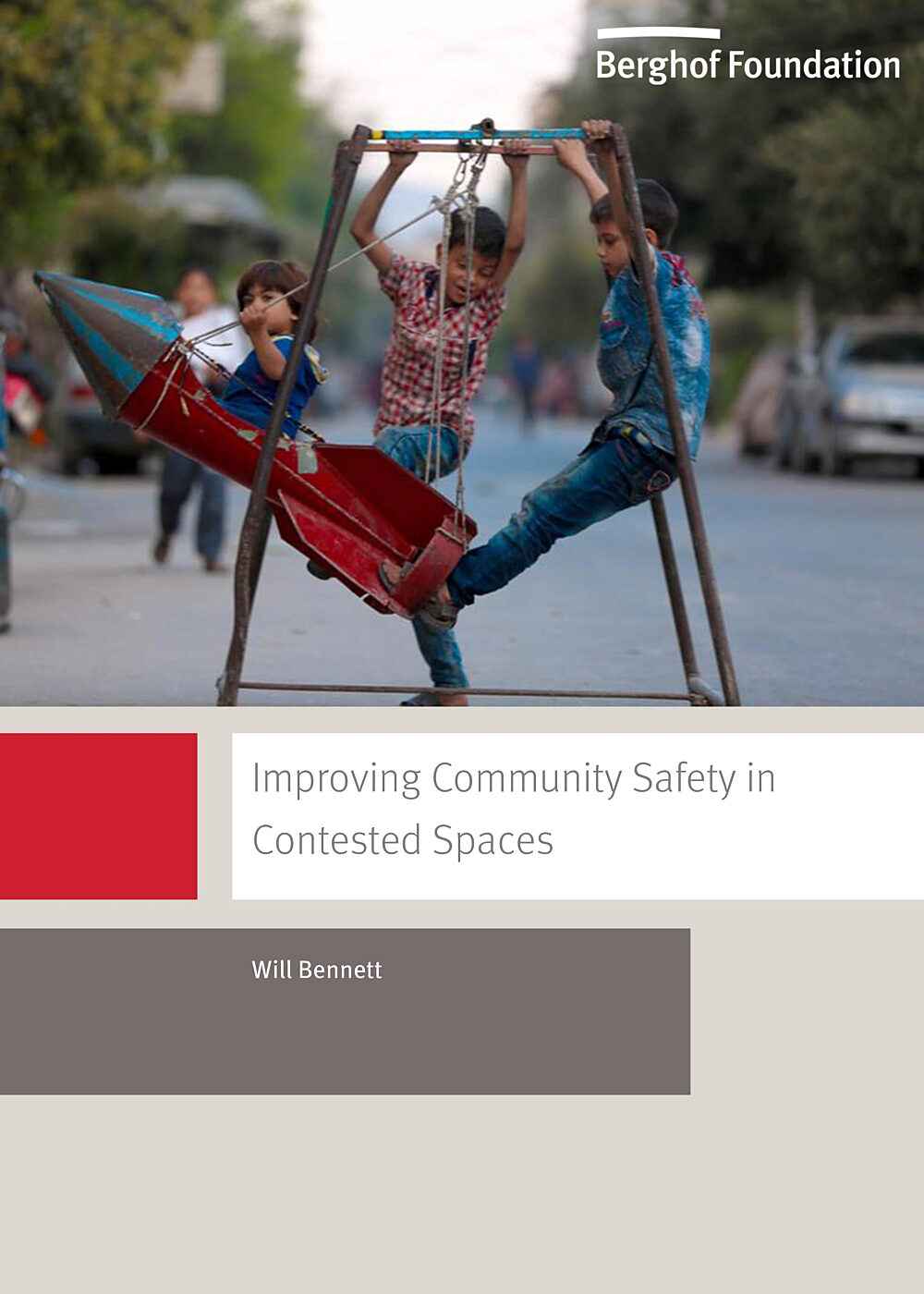
Improving Community Safety in Contested SpacesA Handbook for Syrian Civil Society Actors
The handbook is designed to help civil society actors in contested spaces and conflict settings provide safety for their communities. It outlines the key principles of the community safety approach and provides practical guidance on how to identify security challenges and how to implement strategies to counter them. The handbook was originally developed for civil society actors in Syria, but it can also be used in other contexts. The handbook is currently also available in Arabic.
- Year2020
- Author(s)Will Bennett
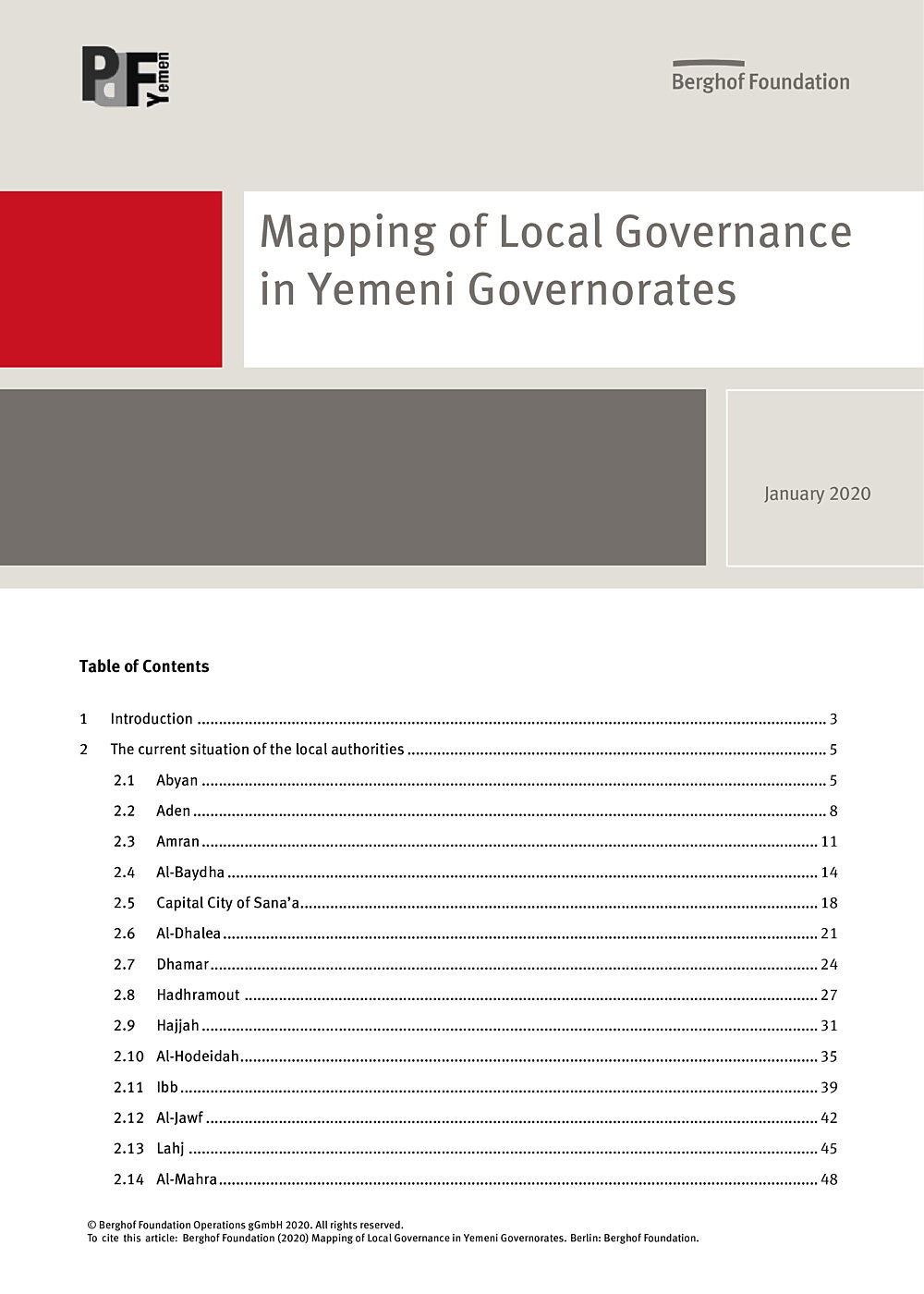
Mapping of Local Governance in Yemeni Governorates
This mapping outlines the situation faced by the population in all 22 governorates of Yemen. We see this as a working draft and welcome any additions, corrections, or comments you might have.
The mapping highlights the economic activities and resources that remain available and introduces the local administration and the situation of the local council in each governorate. It explores the extent to which different institutions of local authority — local councils, executive offices, and governors’ offices — continue to perform their mandates, and provides an overview of the availability of basic services, especially in the health, education, and water and sanitation sectors. The mapping is based on the review and analysis of documents, statistics, and official reports by Yemeni and international organizations, published studies and research, and interviews with local leaders in the governorates.
- Year2020
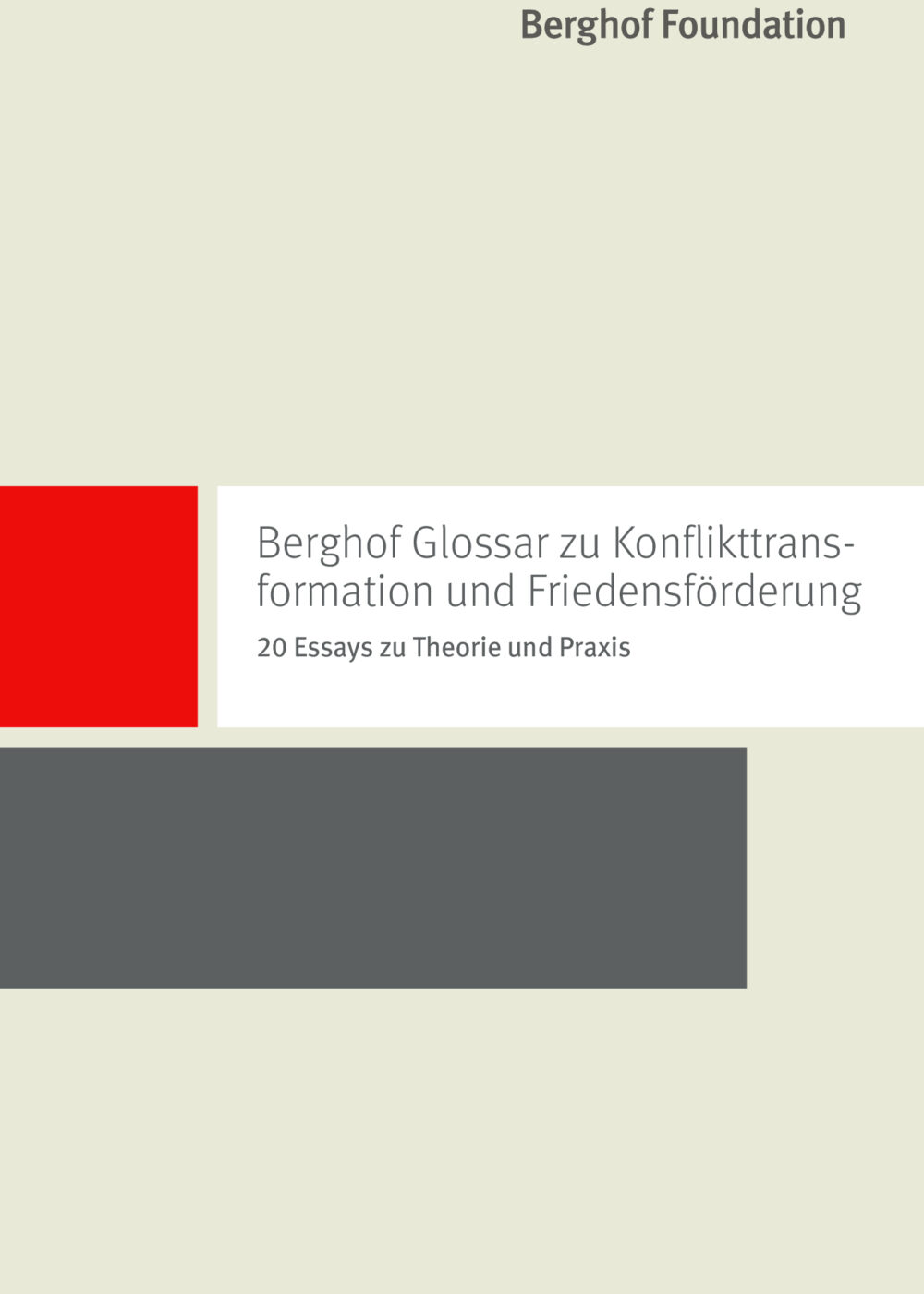
Berghof Glossar zu Konflikttransformation und Friedensförderung20 Essays zu Theorie und Praxis
Das Berghof Glossar zur Konflikttransformation und Friedensförderung stellt die wichtigsten Grundprinzipien und -ansätze unserer Arbeit vor, in der wir Menschen und Konfliktparteien auf der ganzen Welt bei ihren Bestrebungen begleiten, eine friedlichere Zukunft zu schaffen.
- Year2020
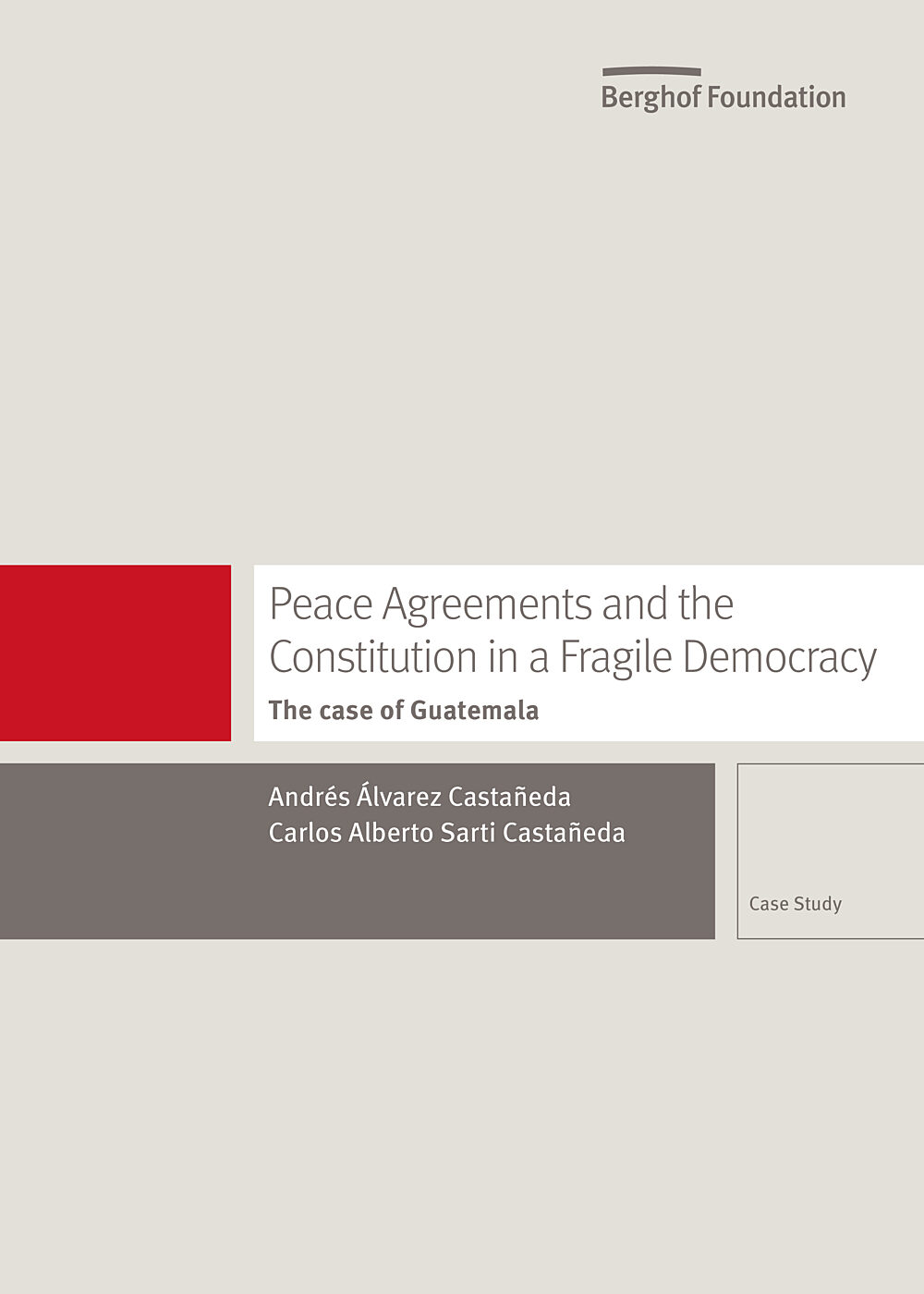
Peace Accords and the Constitution in a Fragile DemocracyThe case of Guatemala
Sarti and Álvarez jointly examine the Guatemalan Peace Accords of 1996, which put an end to the 36-year long civil war that was characterized by a high civilian death rate and widespread commitment of war crimes and crimes against humanity.
- Year2019
- Author(s)Andrés Álvarez Castañeda, Carlos Alberto Sarti Castañeda
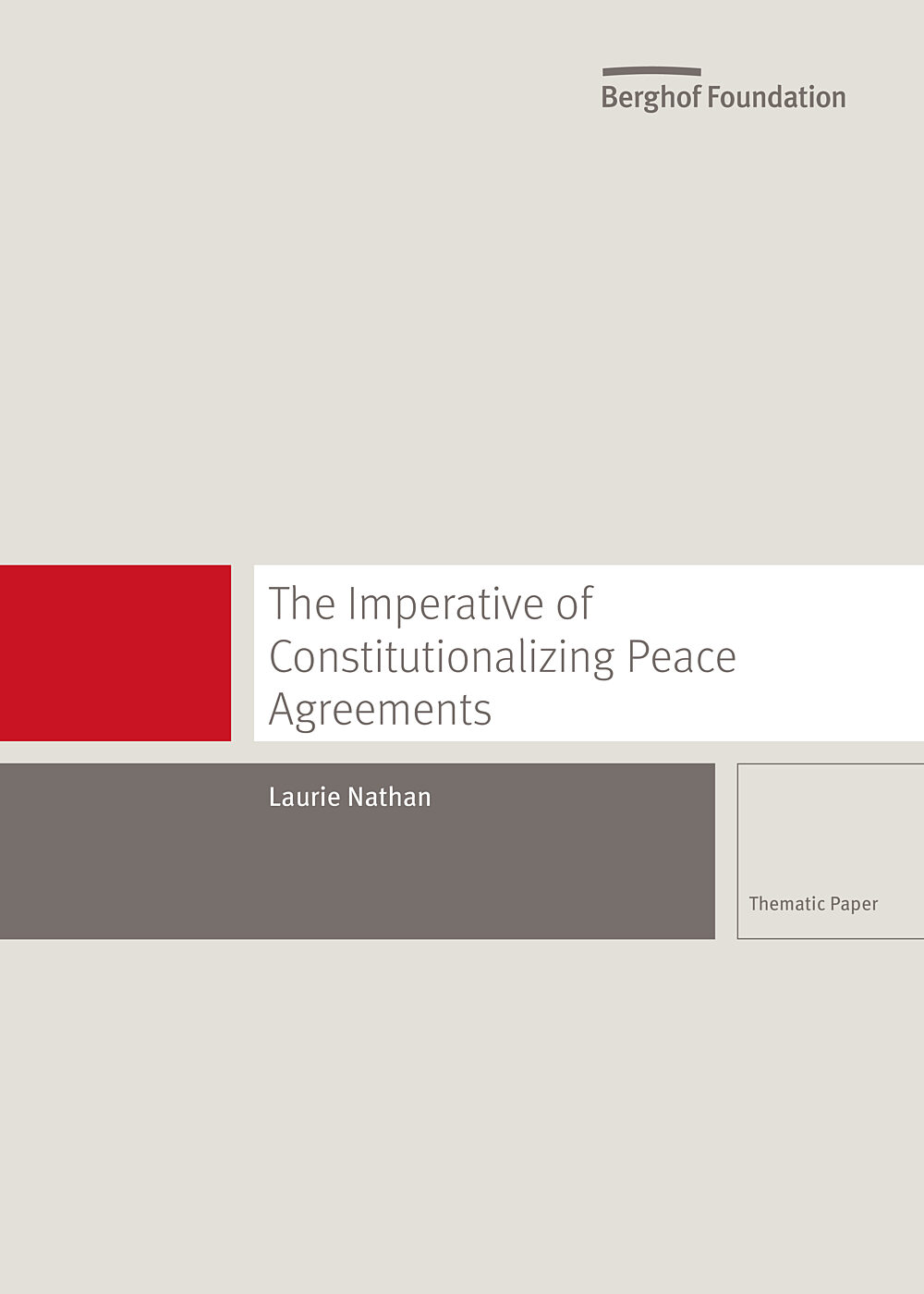
The Imperative of Constitutionalizing Peace Agreements
Nathan seeks to contribute to an understanding of the relationship between comprehensive peace agreements (CPAs) and post-conflict constitutions (PCCs). He defines a PCC as a new or revised constitution enacted as part of efforts to end a violent intra-state conflict and prevent its recurrence. This definition focuses on the purpose and not the timing of the constitutional reform. It encompasses constitutional reform that precedes, follows or takes the place of a CPA in an intended transition from intra-state conflict to sustainable peace. On this background, Nathan addresses three questions: How do conflict parties see the substantive and legal relationship between CPAs and PCCs when they are negotiating a settlement to end armed conflict? Why do the parties to a CPA frequently wish to constitutionalize their negotiated settlement in whole or in part? And what is the substantive and legal relationship between CPAs and PCCs after constitutional reform has taken place?
- Year2019
- Author(s)Laurie Nathan
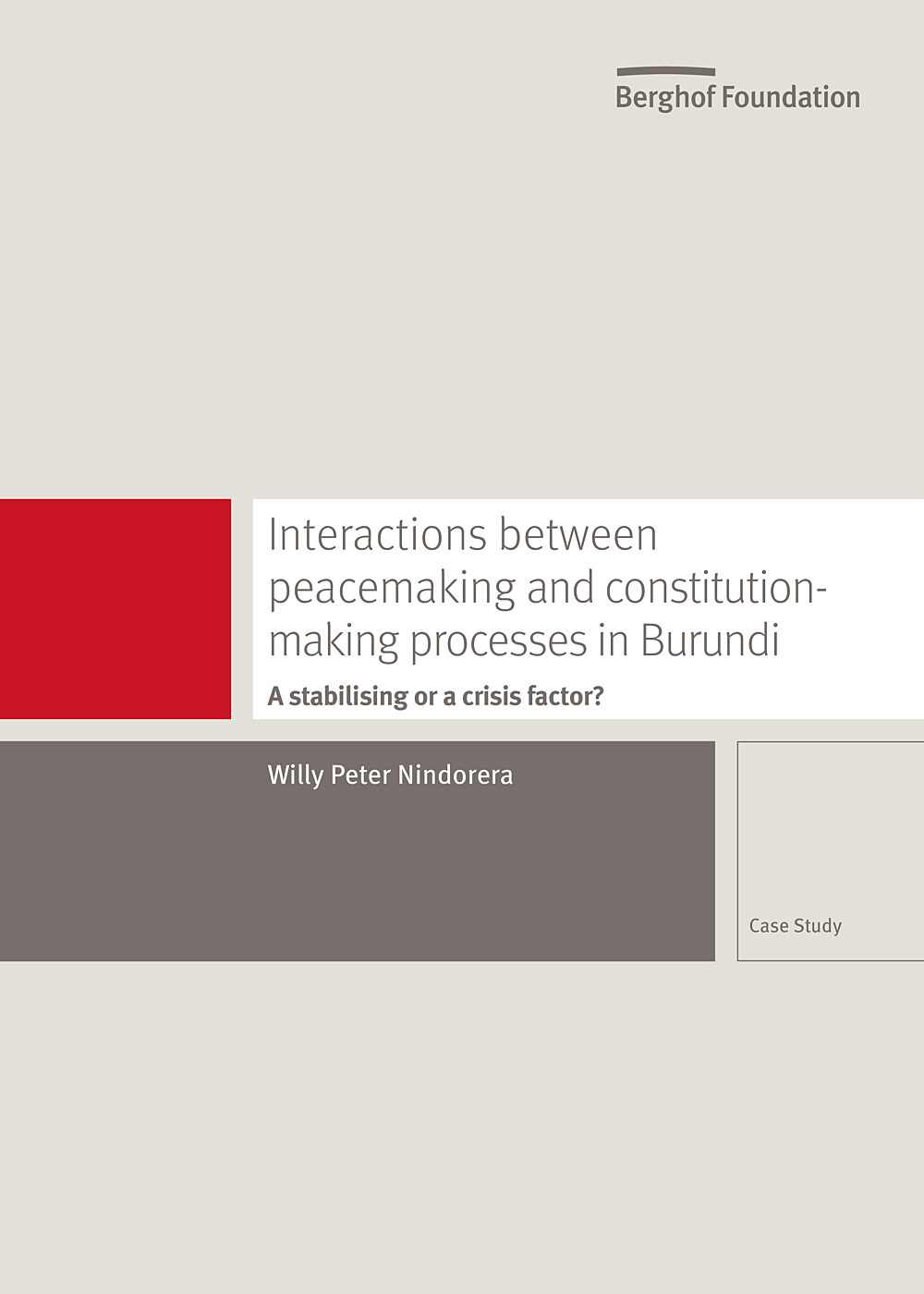
Interactions Between Peacemaking and Constitution-Making Processes in BurundiA Stabilising or a Crisis Factor?
Nindorera analyses the regional mediation process of the Arusha Accords in Burundi. The process, first chaired by president of Tanzania Nyerere and then by Nelson Mandela, lasted for over two years and led to very comprehensive and detailed peace agreements.
- Year2019
- Author(s)Willy Peter Nindorera
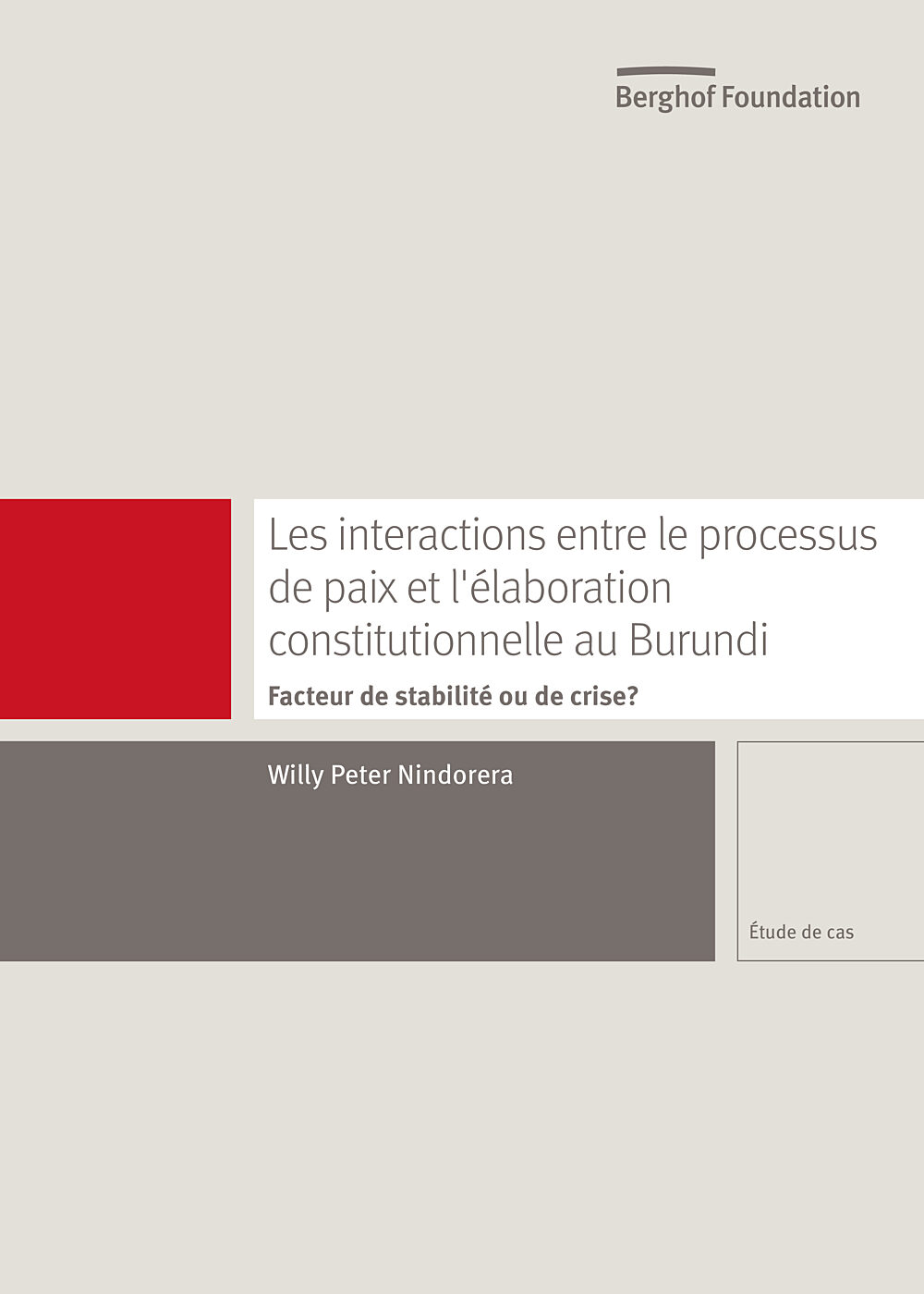
Les Interactions Entre le Processus de Paix et l'Elaboration Constitutionnelle au BurundiFacteur de Stabilité ou de Crise ?
Cette étude sur les interactions entre le processus de paix burundais et le(s) processus d’élaboration de(s) la constitution(s) qui a (ont) suivi s’inscrit dans le cadre d’un projet plus vaste portant sur diverses études de cas similaires où des conflits à dimension politicoidentitaire ont conduit à des négociations de paix menées sous médiation internationale, qui ont abouti par la suite à des processus de réforme et/ou de changement constitutionnel.
- Year2019
- Author(s)Willy Peter Nindorera
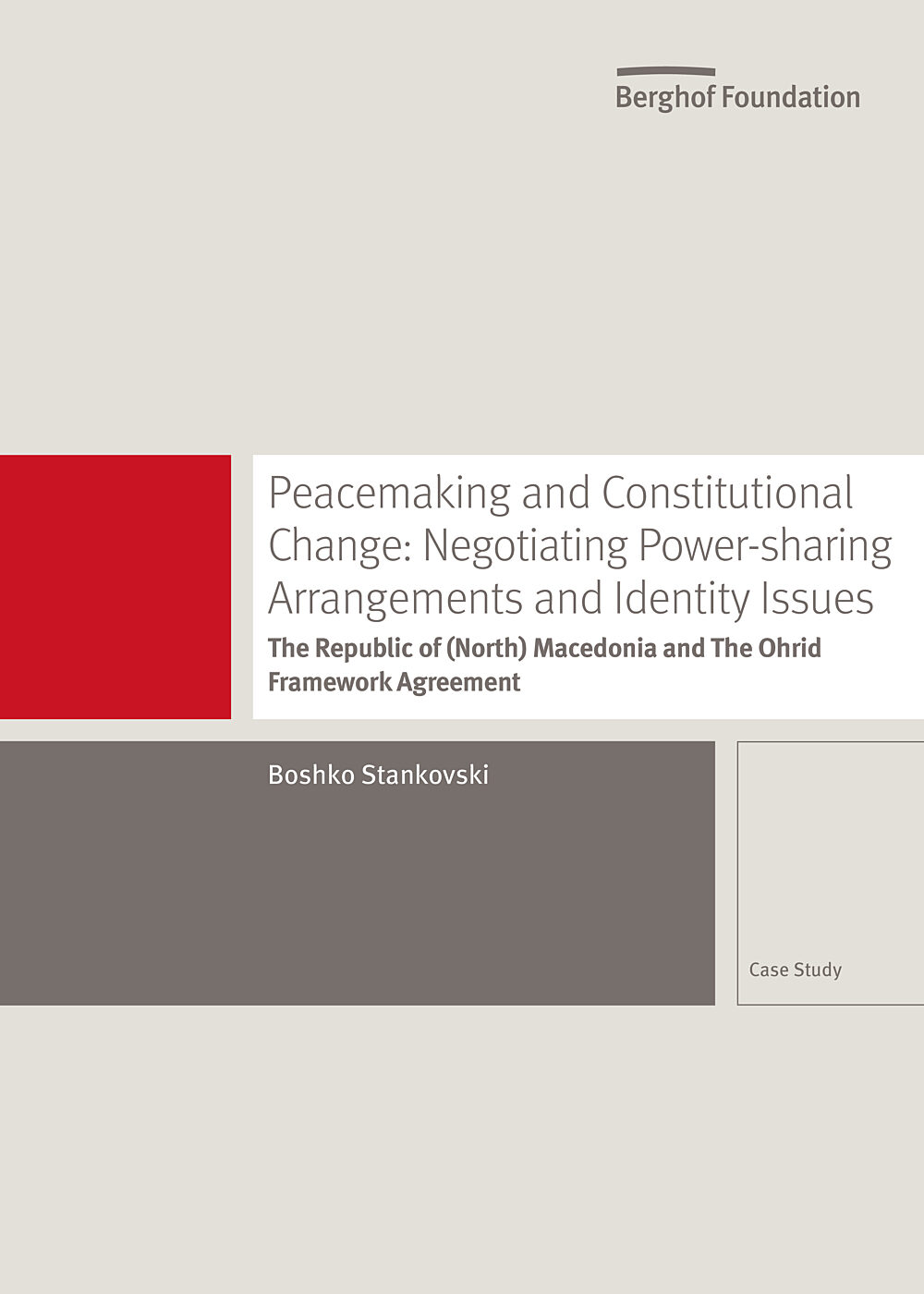
Peacemaking and Constitutional Change: Negotiating Power-sharing Arrangements and Identity IssuesThe Republic of (North) Macedonia and The Ohrid Framework Agreement
Stankovski looks at the case of the Republic of Macedonia and the Ohrid Framework Agreement (OFA) of 2001, which averted a full-blown civil war, the subsequent constitution making process, and the implementation of the constitution.
- Year2019
- Author(s)Boshko Stankovski
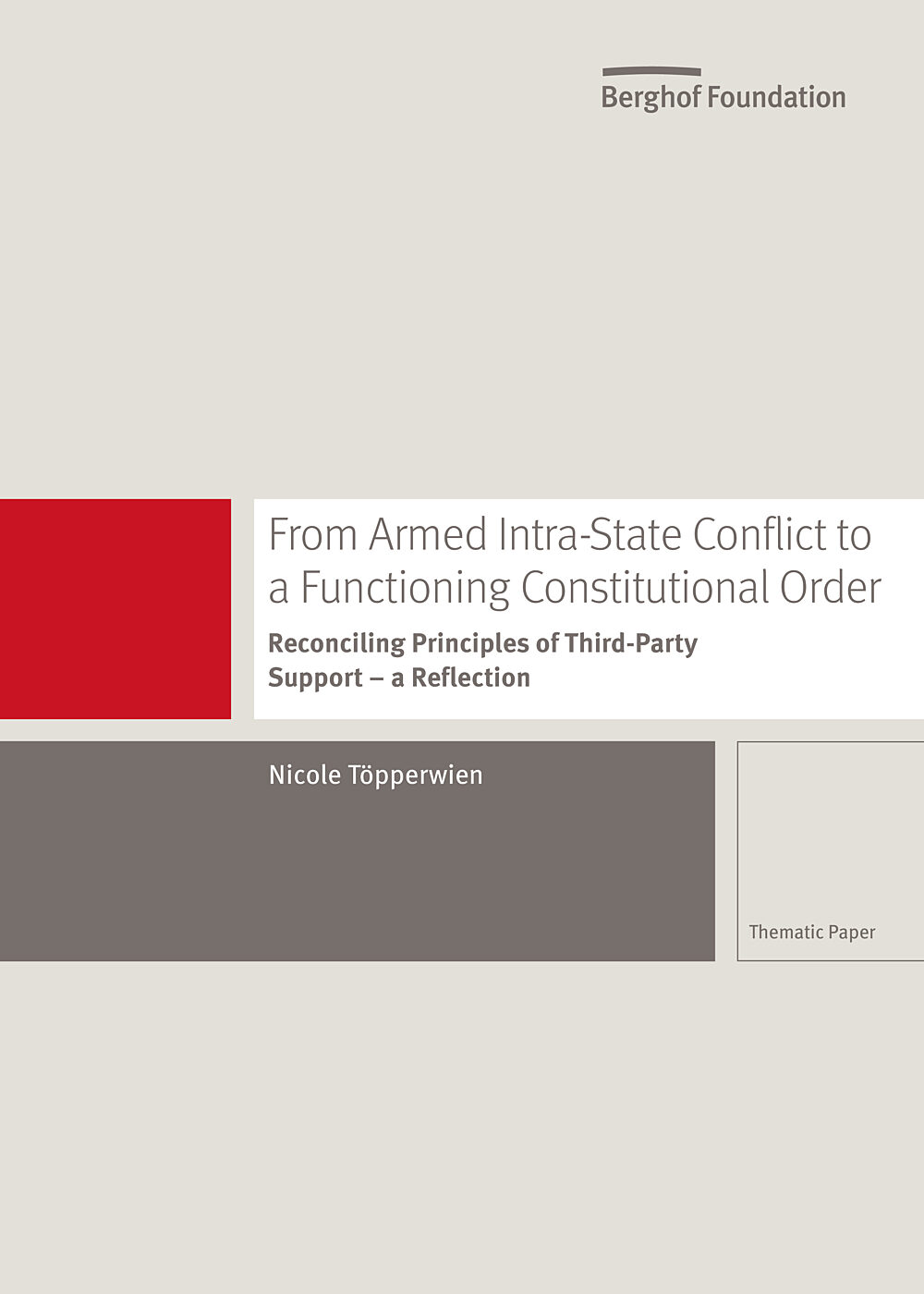
From Armed Intra-State Conflict to a Functioning Constitutional OrderReconciling Principles of Third-Party Support – a Reflection
Töpperwien focuses on third party interventions in the field of mediation and constitution building in conflict contexts. Based on different practitioner-oriented literature, she looks at the different processes and sub-processes around the nexus to analyse the theories of change and the resulting intervention strategies that focus on the transition from armed intra-state conflict to a functioning constitutional order. She identifies the perceived similarities and differences, tensions and complementarities in respect to applied principles that can be encountered.
- Year2019
- Author(s)Nicole Töpperwien
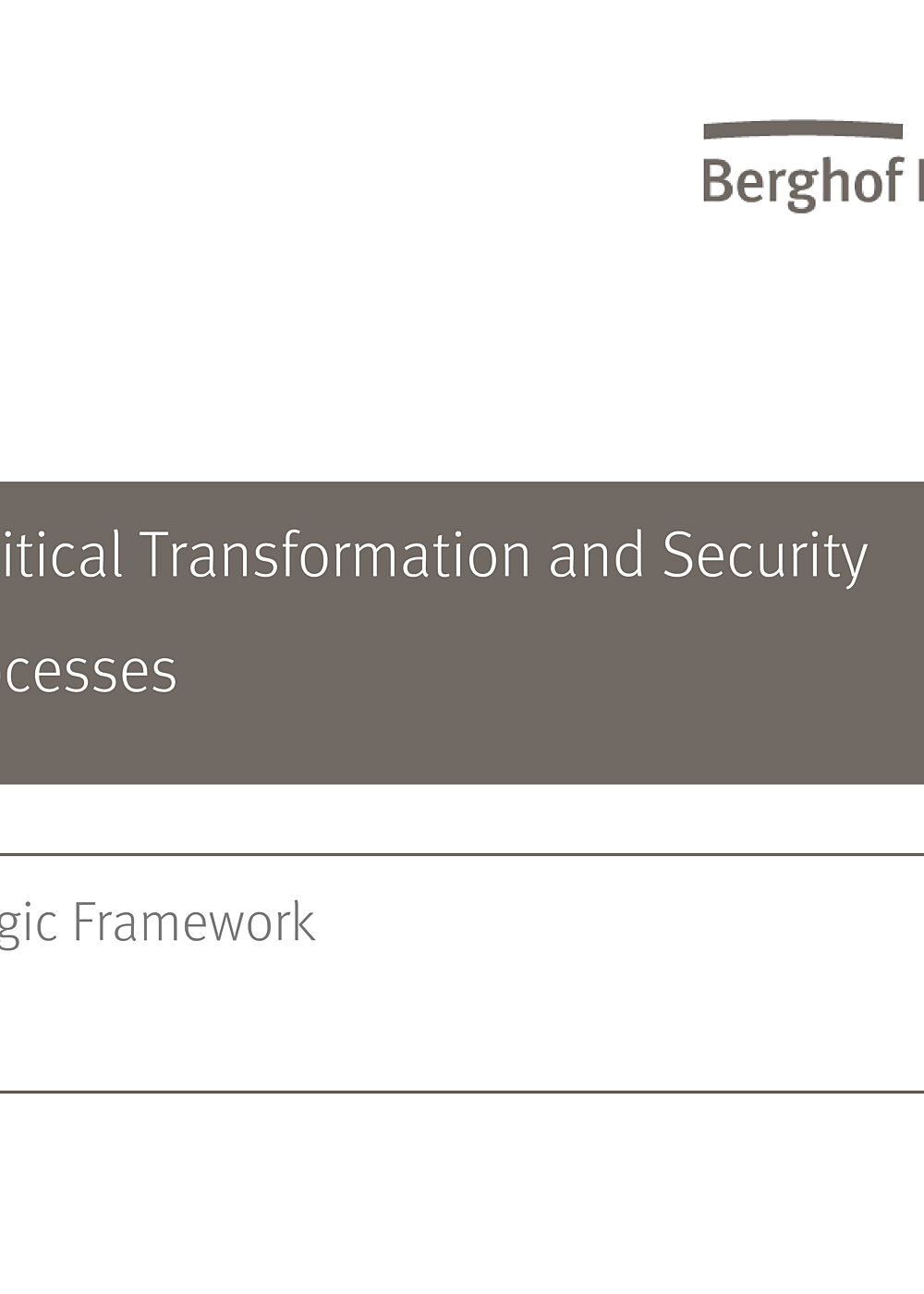
Managing Political Transformation and Security Transition ProcessesA Strategic Framework
This strategic framework was developed based on the 10th Annual Meeting on Negotiations entitled ‘Security Transition and Political Transformation’ held in San Sebastian, Spain, in October 2018. It provides an overview of the most frequent challenges resistance and liberation movements (RLMs) face with regard to transition processes and ways to address such challenges. While in no way exhaustive, we hope that our readers find this overview useful both for reflection and for enhancing their own negotiation strategies.
- Year2019